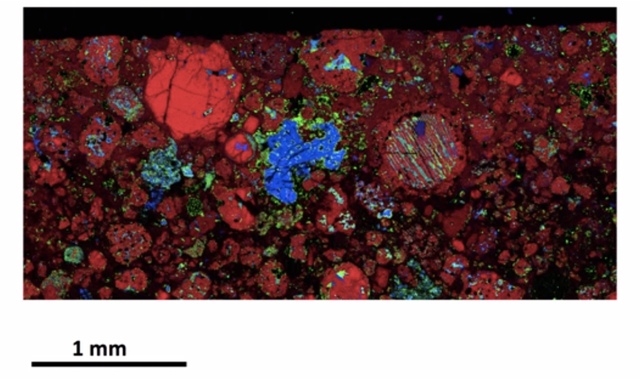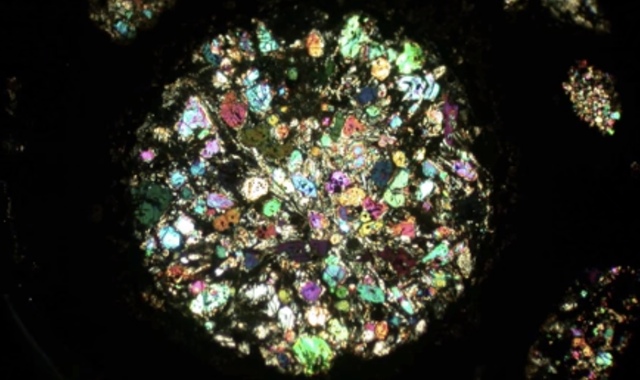Image: YouTube thumb
For most of human history, astronomers have had to learn about celestial bodies largely by observation. Before fancy rockets and orbital spacecraft were developed to break the bonds of gravity, distant worlds—and the materials that comprised them—seemed perpetually out of reach.But even before the advent of spaceflight, nature sometimes threw scientists a bone in the form of meteorites. Like manna from heaven, these rocks contain multitudes of information about otherworldly places, and some ancient cultures understandably embraced these cosmic harbingers as mystical.Now, with the technological advances of the 21st century, we've been able to extract even more tantalizing secrets from these rocky visitors. "We've come a long way since then," said Denton Ebel, curator of the American Museum of Natural History's Meteorites division, in a recent AMNH "SciCafe" presentation.SciCafe: Imaging Space Rocks. Image: AMNH/YouTube.Ebel, along with fellow AMNH meteorite specialists Ellen Crapster-Pregont and Amanda White, showed off some of the more visually stunning techniques for determining the composition of the meteorites. One of them was using differently colored composite maps to zero in on the individual details of the rock, as in the below "Warhol" riff on meteorite microscopy. "We like to create the red, green, blue composite maps in order to better differentiate and see sort of the relationships between the different components in these meteorites," said Crapster-Pregont, while describing the sample pictured below.
"We like to create the red, green, blue composite maps in order to better differentiate and see sort of the relationships between the different components in these meteorites," said Crapster-Pregont, while describing the sample pictured below. "[T]his is an example of a red-green-blue magnesium-calcium-aluminum combination," she continued. "Here you can very clearly distinguish the chondrules which are very red and magnesium-rich, from the calcium and aluminum which are the blue and green."But perhaps the most beautiful image presented during the lecture was this picture of an ean individual chondrule.
"[T]his is an example of a red-green-blue magnesium-calcium-aluminum combination," she continued. "Here you can very clearly distinguish the chondrules which are very red and magnesium-rich, from the calcium and aluminum which are the blue and green."But perhaps the most beautiful image presented during the lecture was this picture of an ean individual chondrule. "This is one of those chondrules where the mineral grains, each one is changing the light a little bit because it's crystal in material, and it's anisotropic to light," said Ebel. "And in between those though you have black, which is glass, which is isotropic [and] the fine grained minerals between these chondrules and so forth, is dark because it's so fine-grained it scatters light and nothing comes through the microscope.""We have taken optical microscopy here in the museum, in a totally different direction with extraterrestrial materials," he added.The whole lecture is worth a watch or a listen, if you are interested in decoding alien space rocks or appreciating their unique beauty. Meteor impacts may have the power to wipe out species and scar planets, but as the AMNH research demonstrates, nobody can argue they don't deliver some truly out-of-this-world aesthetics too.
"This is one of those chondrules where the mineral grains, each one is changing the light a little bit because it's crystal in material, and it's anisotropic to light," said Ebel. "And in between those though you have black, which is glass, which is isotropic [and] the fine grained minerals between these chondrules and so forth, is dark because it's so fine-grained it scatters light and nothing comes through the microscope.""We have taken optical microscopy here in the museum, in a totally different direction with extraterrestrial materials," he added.The whole lecture is worth a watch or a listen, if you are interested in decoding alien space rocks or appreciating their unique beauty. Meteor impacts may have the power to wipe out species and scar planets, but as the AMNH research demonstrates, nobody can argue they don't deliver some truly out-of-this-world aesthetics too.
Advertisement
